Puppet opera is strongly linked to the Sicilian tradition, more correctly imported to Sicily from Spanish culture, towards the end of the 18th and the beginning of the 19th century. Puppet theatre is a particular type of puppet theatre and falls into the category of “Theatre of Figures”, so in order to stage it it is always necessary for someone to move these figures, or PUPI, as it is more correctly called. The person who moves them is the “Puparo“, who is not only in charge of putting them on stage, but also of the creation of the puppet itself and of the elaboration of the texts that will be put on stage; giving life to a true form of Sicilian tradition.
The stories told by the puppeteer come from legends, tales and works handed down by the great writers of Italian literature: from Boiardo to Ariosto and Tasso, or from the great Chansons and jester’s tales of the Kings of France. The names given to each puppet are also taken from these works: Ronaldo, Rinaldo, Angelica, Ruggero, etc.
In Sicily, there are two types of techniques for making these “figures”: the Palermo tradition and the Catania tradition.
PALERMITAN TRADITION:
- Dimensions of the puppets: from 80 cm to one metre high.
- Weight: up to about 8 kg.
- Mechanical characteristics: articulated knees; if the puppet is a warrior, the sword can be unsheathed and placed in its scabbard.
- Maneuvering system: from the sides, with arms outstretched: the animators stand behind the side wings of the stage and place their feet on the same footing as the puppets.
- Stage space: the action surface of the puppets is deeper than wide: the width of the stage is limited by the possibility for the animators to lean out of the wings without being seen from the sides.
- Theatrical conception and interpretation: more stylised and elementary.
CATANESE TRADITION:
- Dimensions of the puppets: from 80 cm to 1.30 m in height.
- Weight: up to 35 kg.
- Mechanical characteristics: stiff legs, without knee joints; if the puppet is a warrior, the sword is almost always held in the right hand.
- Maneuvering system: from the top of a bridge behind the backdrop (‘u scannappoggiu): the animators hold the puppets by resting their feet on a thick wooden board suspended one meter above the ground (‘a faddacca).
- Stage space: the action surface of the puppets is wider than deep: the animators, walking on the animation bridge, can follow the puppet across the whole width of the stage without any problem.
- Theatrical conception and interpretation: more tragic, sentimental and realistic.
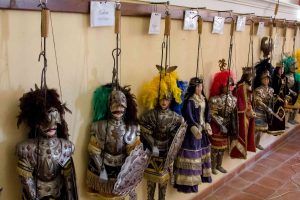
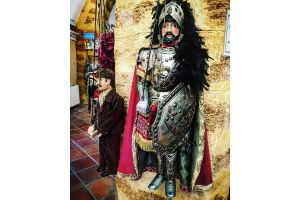
Here, in Agrigento, the tradition of puppetry was continued and is still with us today thanks to the artisan Carmelo Guarneri.
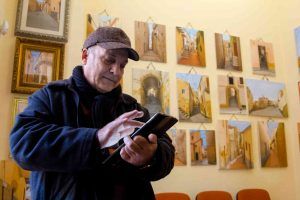
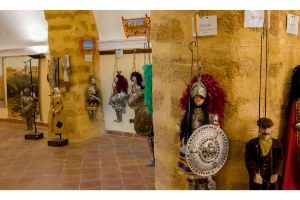
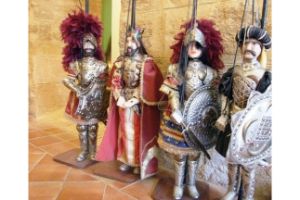
Autore: Martina Consiglio
